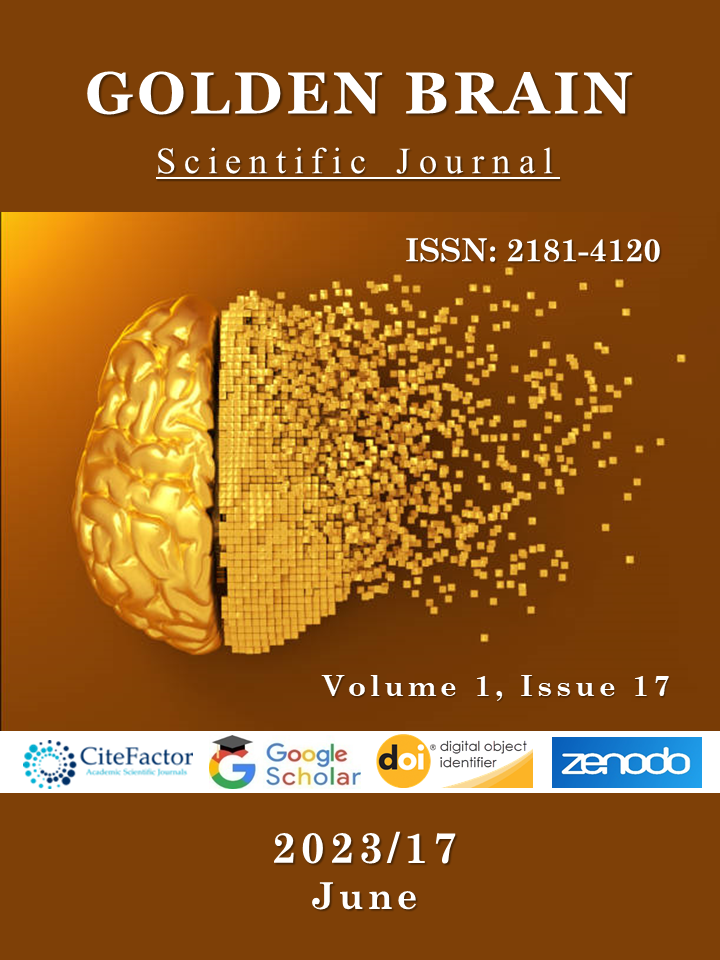MODERN THERAPY OF ARTERIAL HYPERTENSION
Keywords:
neurohumoral system, epidemiological monitoring, Essential hypertension, symptomatic arterial hypertension, ACE inhibitors, dihydropyridines.Abstract
Arterial hypertension is a persistent increase in resting systolic blood pressure (≥ 130 mm Hg) and/or diastolic blood pressure (≥ 80 mm Hg). An increase in blood pressure without a known cause (primary, essential hypertension) is the most common. Hypertension with an identified cause (secondary hypertension) is usually due to primary aldosteronism. Sleep apnea, chronic kidney disease, obesity, or renal artery stenosis are other causes of secondary hypertension. Usually, symptoms appear only with severe or prolonged course. Diagnosis is based on sphygmomanometry. Diagnosis can determine the cause, evaluate organ damage, and identify other cardiovascular risk factors. Treatment includes lifestyle changes and medications, including diuretics, angiotensin-converting enzyme (ACE) inhibitors, angiotensin II receptor blockers, and calcium channel blockers.
Hypertension is defined as systolic blood pressure ≥ 130 mmHg. or diastolic blood pressure ≥ 80 mmHg. or taking medications to treat high blood pressure. Nearly half of US adults have hypertension. Many of these people do not know that they have hypertension. Approximately 80% of adults with hypertension are recommended drug therapy and lifestyle changes, but only about 50% of patients with hypertension receive treatment.
Only about 1 in 5 adults with hypertension have their blood pressure (BP) under control. Even with medical treatment and lifestyle changes, only 26% of patients achieve blood pressure control, and among adults on antihypertensive therapy whose blood pressure is not controlled, almost 60% of blood pressure is ≥ 140/90 mmHg.
References
Julius S, Palatini P, Kjeldsen SE et al. Usefulness of heart rate to predict cardiac events in treated patients with high-risk systemic hypertension. Am J Cardiol 2012; 109:685–92.
Matsushita K, van der Velde M, Astor BC et al. Association of estimated glomerular filtration rate and albuminuria with all-cause and cardiovascular mortality in general population cohorts: a collaborative meta-analysis. Lancet 2010; 375:2073–81.
Stergiou GS, Alpert B, Mieke S et al. A universal standard for the validation of blood pressure measuring devices: Association for the Advancement of Medical Instrumentation/European Society of Hypertension/International Organization for Standardization (AAMI/ ESH/ISO) Collaboration Statement. J Hypertens 2018; 36:472–8.
Kirchhof P, Lip GY, Van Gelder IC, Bax J et al. Comprehensive risk reduction in patients with atrial fibrillation: emerging diagnostic and therapeutic options – a report from the 3rd Atrial Fibrillation Competence NETwork/European Heart Rhythm Association consensus conference. Europace 2012; 14(1):8–27. DOI: 10.1093/europace/eur241. Epub 2011 Jul 26. Review. PubMed PMID: 21791573; PubMed Central PMCID: PMC3236658.
Cuspidi C, Ambrosioni E, Mancia G et al. Role of echocardiography and carotid ultrasonography in stratifying risk in patients with essential hypertension: the Assessment of Prognostic Risk Observational Survey. J Hypertens 2002; 20:1307–14.
Bobrie G, Clerson P, Menard J et al. Masked hypertension: a systematic review. J Hypertens 2008; 26: 1715–25
Vermeer SE, Longstreth WT Jr, Koudstaal PJ. Silent brain infarcts: a systematic review. Lancet Neurol 2007; 6(7): 611–9. PubMed PMID: 17582361
Pyörälä K, De Backer G, Graham I et al. Prevention of coronary heart disease in clinical practice. Recommendations of the Task Force of the European Society of Cardiology, European Atherosclerosis Society and European Society of Hypertension. EurHeartJ 1994; 15(10): 1300–31. PubMed PMID: 7821306
De Buyzere ML, Clement DL. Management of hypertension in peripheral arterial disease. Prog Cardiovasc Dis 2008; 50:238–63.
Brunstrom M, Carlberg B. Association of blood pressure lowering with mortality and cardiovascular disease across blood pressure levels: a systematic review and meta-analysis. JAMA Intern Med 2018; 178:28–36.
Downloads
Published
How to Cite
Issue
Section
License

This work is licensed under a Creative Commons Attribution-ShareAlike 4.0 International License.

